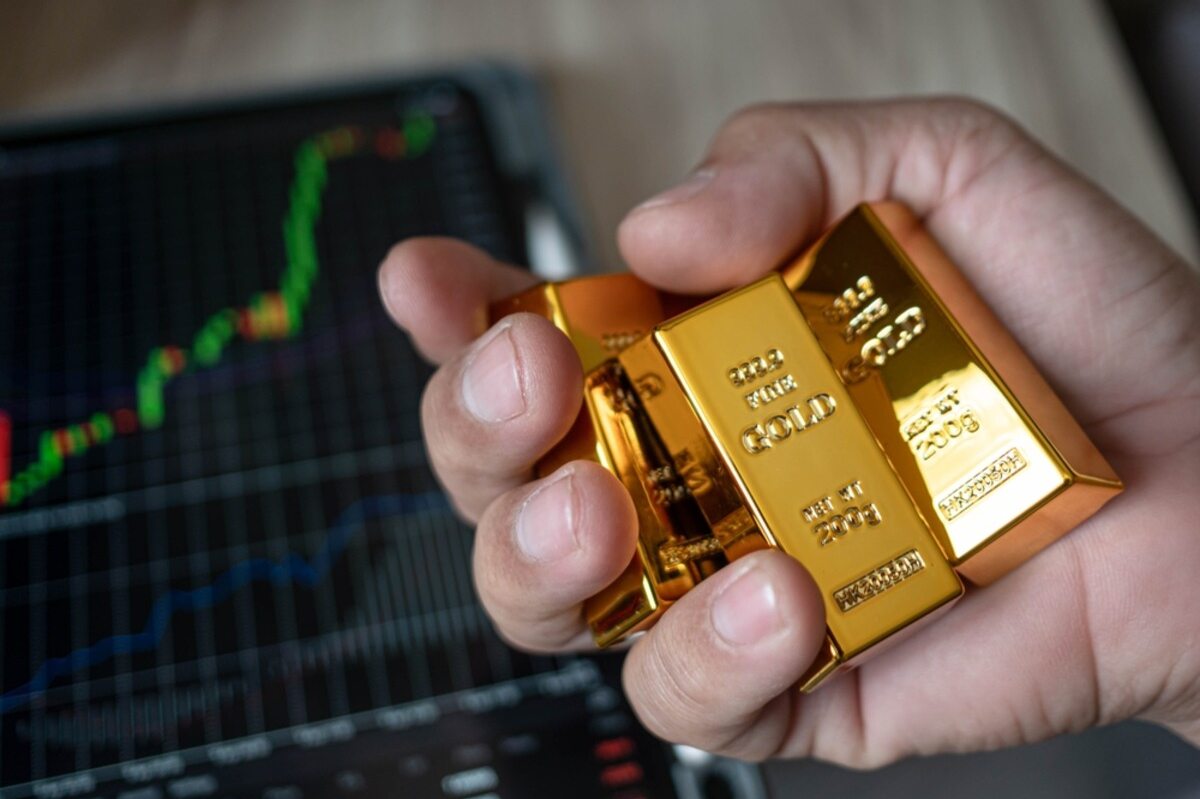Gold prices edged up slightly on Wednesday, building on modest gains from the previous session as demand for safe-haven assets was bolstered by concerns over potential increases in U.S. trade tariffs. However, more significant gains in gold were limited by the strength of the U.S. dollar, while easing tensions in the Middle East also dampened some safe-haven demand.
In the UAE, gold rates saw a slight increase. The price of 24-carat gold rose by AED1.5, reaching AED319.5, while 22-carat gold gained AED1.25, now priced at AED295.75. Additionally, 21-carat gold climbed AED1.5 to AED286.5, and 18-carat gold went up by AED1.25, settling at AED245.5.
Spot gold increased by 0.3 percent to $2,640.16 an ounce, and gold futures for February delivery rose by 0.7 percent to $2,665.41 an ounce by 23:38 ET (04:38 GMT).
Trump threatens additional trade tariffs
U.S. President-elect Donald Trump has threatened to impose further trade tariffs on China, Canada, and Mexico upon taking office, raising fears of a renewed trade war between the world’s largest economies. Analysts caution that steep tariffs could hinder global economic growth and elevate U.S. inflation, leading to a higher outlook for interest rates in the long term. This prospect contributed to a sharp rise in the dollar, which limited overall gains in gold.
Safe-haven demand for gold was also affected by President Joe Biden’s announcement of a ceasefire agreement between Israel and Lebanon, signaling a reduction in tensions in the Middle East conflict.
Other precious metals show slight gains
Other precious metals experienced modest increases on Wednesday. Silver futures rose by 0.4 percent to $30.962 an ounce, while platinum futures edged up to $932.05 an ounce. Among industrial metals, benchmark copper futures on the London Metal Exchange rose by 0.6 percent to $9,026.50 a ton, and copper futures for February increased by 0.4 percent to $4.1463 a pound.
Trump policies may limit gold demand, warns BofA
Bank of America analysts have warned that Trump’s economic policies, anticipated to stimulate higher U.S. growth and strengthen the dollar, could reduce investor interest in gold. Trump is expected to implement additional corporate tax cuts and adopt expansionary economic policies during his second term, which could support growth while also increasing inflation. This trend is likely to keep U.S. interest rates relatively high in the long term, reinforcing the dollar and Treasury yields while curtailing gold demand.
Precious metals, particularly gold, experienced significant losses throughout November following Trump’s election victory earlier in the month. Industrial metal prices faced pressure from the prospect of a more hawkish U.S. stance toward China, a major importer of copper and other base metals.
Gold prices rose on Tuesday after a decline of more than 3 percent in the previous session, driven by President-elect Trump’s proposed tariffs on all imports from Canada, Mexico, and China. In the UAE, gold rates saw a slight decrease, with 24-carat gold falling by AED5.5 to AED318, while 22-carat gold dropped AED5.25 to AED294.50. Additionally, 21-carat gold decreased by AED5 to AED285, and 18-carat gold fell AED4.25 to AED244.25.
Global gold prices recover slightly
Globally, spot gold rose by 0.17 percent to $2,621.89 per ounce as of 6:56 GMT, recovering some losses from earlier in the session when prices reached their lowest point since November 18. Meanwhile, U.S. gold futures gained 0.19 percent to $2,647.65.
Safe-haven demand remains resilient
Despite the sharp decline in the previous session and early in the day, gold prices managed to hold steady, indicating some ongoing safe-haven demand. With Trump back in the spotlight, the precious metals market may face uncertainty in the near future. Trump has vowed to impose a 25 percent tariff on all products entering the U.S. from Mexico and Canada, along with a 10 percent tariff on all Chinese imports, driving some safe-haven flows and providing a modest uptick for gold prices.
Gold is traditionally viewed as a safe-haven investment during periods of economic and geopolitical uncertainty, including trade wars and regional conflicts.
Read more: Gold prices rise after Trump proposes new tariffs
Optimism over Bessent’s nomination and ceasefire impacts gold
The optimism surrounding Scott Bessent’s nomination for U.S. Treasury Secretary and the Israel-Lebanon ceasefire deal weighed on safe-haven gold at the start of the new week. Hopes that Bessent will adopt a more measured approach to tariffs in an effort to address the budget deficit led to a sharp decline in U.S. Treasury bond yields and weakened the U.S. dollar.
Fed rate cuts and market expectations
Additionally, market concerns that Trump’s policies could reignite inflation and compel the Federal Reserve to gradually cut interest rates triggered a rise in U.S. Treasury bond yields. This development helped the dollar regain some strength, further undermining gold prices and making them more expensive for foreign currency holders.
Chicago Fed President Austan Goolsbee stated on Monday that, barring compelling evidence of economic overheating, he expects the central bank to continue lowering rates. Meanwhile, Minneapolis Fed President Neel Kashkari indicated that it may still be appropriate to consider another rate cut at the December FOMC policy meeting.
Traders, however, are scaling back their expectations for another 25-basis-point rate cut in December, amid predictions that Trump’s policies will drive inflation higher. According to the CME FedWatch Tool, the markets currently estimate a 56.2 percent chance of a 25-basis-point rate cut by the U.S. Federal Reserve in December.
Market participants will be closely watching U.S. consumer confidence data and the minutes from the Fed’s November meeting later today, as well as the first revisions of GDP and core PCE figures later this week. On the geopolitical front, President Biden and French President Emmanuel Macron are expected to announce a ceasefire in Lebanon between Hezbollah and Israel, according to four senior Lebanese sources.




